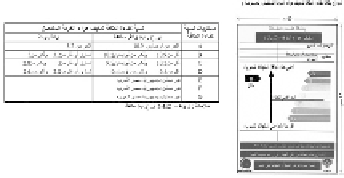Environmental Engineering Reference
In-Depth Information
h. Does it represent the primary energy or emissions associated
with on-site generation that is used on-site and so is not sub-
tracted from (7).
i. Does it represent the primary energy or CO
2
saving associated
with exported energy, which is subtracted from (7).
7.3 New Design Practices
7.3.1 General
One of the Egyptian Department of Energy's greatest efficiency accomplish-
ments is the Residential Air Conditioner Standards and Labelling programme.
After years of coordination with manufacturers and the Department of Trade
and Industry's EOS (Egyptian Standards Organisation), energy labelling was
devised for air conditioners (whether split or window units, see Figure 7.6).
Work is underway to incorporate energy labelling for the air-conditioning
business. The programme has the potential to become a powerful platform
for subsequent energy efficiency efforts not only in Egypt but also in other
Arab countries. Air conditioners, both imported and domestic models, are
required to meet a minimum efficiency standard and to be labelled. Although
only in use in a small fraction of households, air conditioners are given prior-
ity because they represent one of the fastest growing electricity end uses in
the residential sector. The impact of the programme will increase with time
because the number of air conditioners in the country is rising dramatically.
Standards and labelling programmes provide enormous energy-saving
potential that can direct developing countries toward sustainable energy
use. Improved end-use efficiency programmes can contribute significantly
to developing economies. The main benefits are
1. Less need to build new power plants
2. Reduced greenhouse gas emissions
3. Improved competitiveness for local manufacturers
FIGURE 7.6
Egyptian energy air conditioner label.


